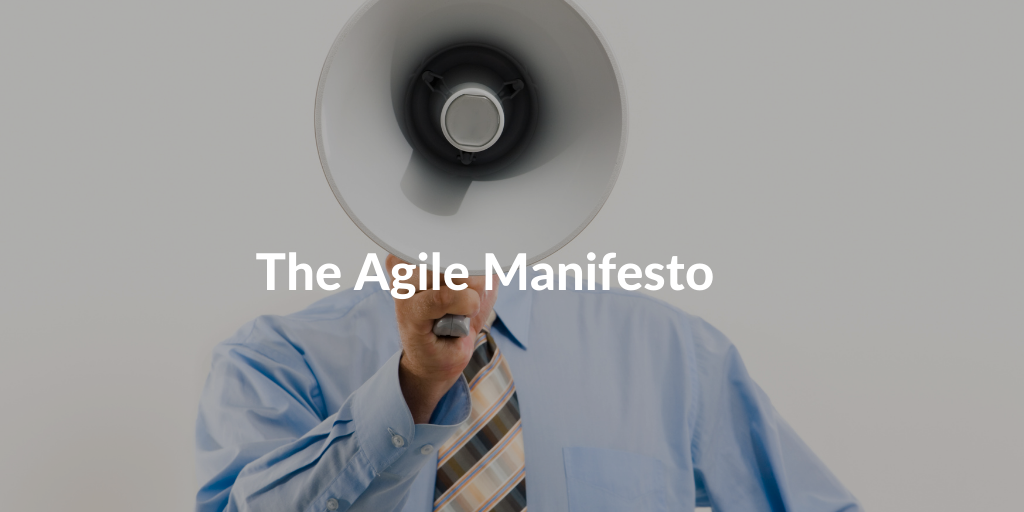The Agile Manifesto was written in February 2001 by software practitioners who found consensus around 4 values and 12 Agile principles. The Agile Manifesto is the core of the Agile Movement. The intention of Agile is to align development with business needs.
The Agile Manifesto, its 4 values and 12 Agile Principles, were the consequences of industry frustration in the 1990s. The frustration of that time was mainly about the time lag between business requirements and the delivery of technology. Business and customer requisites changed during this lag time with the result that the final product did not meet the then current needs. The Agile Manifesto writes:
“We are uncovering better ways of developing software by doing it and helping others do it. Through this work we have come to value:
- Individuals and interactions OVER processes and tools
- Working software OVER comprehensive documentation
- Customer collaboration OVER contract negotiation
- Responding to change OVER following a plan
That is, while there is value in the items on the right, we value the items on the left more.”
The 12 Agile Principles
The 12 Agile Principles included in the Agile Manifesto describe a culture in which change is welcome, and the customer is the focus of the work.
- Our highest priority is to satisfy the customer through early and continuous delivery
- Welcome changing requirements, even late in development
- Deliver working software frequently, with a preference to the shorter timescale
- Business people and developers must work together daily throughout the project
- Build projects around motivated individuals. Give them the environment, support and trust
- The most efficient and effective method of conveying information is face-to-face conversation
- Working software is the primary measure of progress
- Agile processes promote sustainable development
- Continuous attention to technical excellence and good design enhances agility
- Simplicity–the art of maximizing the amount of work not done–is essential
- The best architectures, requirements, and designs emerge from self-organizing teams
- At regular intervals, the team reflects on how to become more effective
The Agile Methodology
According to the 2017 VersionOne’s State of Agile Report, 94% of organisations practice Agile in some form.
The word “Agile” refers to a group of different methodologies and frameworks based on iterative development, incremental delivery, continual planning, continual learning and self-organizing cross-functional teams.
This group of different Agile methodologies and frameworks have in common the 12 core Agile principles as outlined in the Agile Manifesto. The main benefit for organisations adopting an Agile methodology is the ability to “adapt to change”.
Some Agile methodologies are clearly focusing on delivery and software development, some others are more project-centric and can be used as typical Project Management methods.
Agile Meaning and Definition
Agile is what is called “an umbrella term” for several iterative and incremental (software) development methodologies. What is important about agile frameworks is that they all focus on empowering people to collaborate and make decisions together. Quickly and effectively.
Some well known Agile Frameworks are; Scrum, KanBan, SaFe, Design thinking, Extreme Programming. Curious to learn more about different Agile Frameworks? Here you can find a nice overview and more information.








